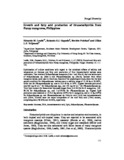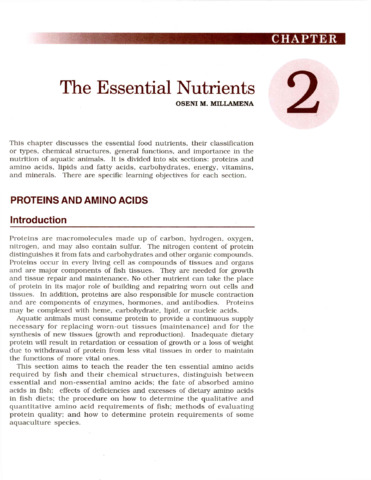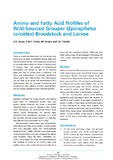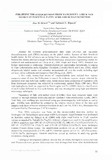Growth and fatty acid production of thraustochytrids from Panay mangroves, Philippines
- Global styles
- MLA
- Vancouver
- Elsevier - Harvard
- APA
- Help

Download URL
www.fungaldiversity.orgDate
2003Page views
2,296ASFA keyword
AGROVOC keyword
Taxonomic term
Metadata
Perlihat publikasi penuh
Share
Abstract
Optimization of culture conditions with regard to the combined effects of salinity and temperature on biomass and fatty acid production of four thraustochytrid isolates were undertaken. Two strains of Schizochytrium mangrovei (IAo-1 and IXm-6), and one isolate each of Schizochytrium sp. (BSn-1) and Thraustochytrium sp. (IRa-8), isolated from fallen mangrove leaves, were used in this study. Results of the physiological study show that the best growth condition for Schizochytrium isolates was at a salinity range of 15-30 ‰ at 20-30°C, while that for Thraustochytrium sp. was at 22.5-30 ‰ at 25°C. Highest biomass production was 350 mg 50 mL-1 for Schizochytrium spp., and 133 mg 50 mL-1 for Thraustochytrium sp. Total lipid content (% freeze-dried biomass) ranged from 16.0-33.2% for S. mangrovei, 13.0-39.1% for Schizochytrium sp., and 11.4-37.5% for Thraustochytrium sp. Highest lipid production was observed at 15-22.5 ‰ salinity (25°C) for S. mangrovei, and at 15 ‰ (25°C) for Schizochytrium sp. and Thraustochytrium sp. Palmitic acid (16:0) and docosahexaenoic acid (DHA; 22:6n3) were the major components of the total fatty acid (TFA) content, comprising about 39-42% and 24-35%, repectively.
Suggested Citation
Leaño, E. M., Gapasin, R. S. J., Polohan, B., & Vrijmoed, L. L. (2003). Growth and fatty acid production of thraustochytrids from Panay mangroves, Philippines. Fungal Diversity , 12, 111-122. http://hdl.handle.net/10862/1969
Type
ArticleISSN
1560-2745; 1878-9129Koleksi
- Journal Articles [1258]
Related items
Showing items related by title, author, creator and subject.
-
The essential nutrients: Proteins and amino acids
Millamena, Oseni M. (Aquaculture Department, Southeast Asian Fisheries Development Center, 2002)This section aims to teach the reader the ten essential amino acids required by fish and their chemical structures, distinguish between essential and non-essential amino acids; the fate of absorbed amino acids in fish; ... -
Series: ACIAR Monograph 110
Amino and fatty acid profiles of wild-sourced grouper (Epinephelus coioides) broodstock and larvae
Alava, Veronica R.; Priolo, Flora Mae P.; Toledo, Joebert D.; Rodriguez, Jesus C., Jr.; Quinitio, Gerald F.; Sa-an, Analyn C.; de la Peña, Milagros R.; Caturao, Romeo D. (Australian Centre for International Agricultural Research, 2004)This study was undertaken to provide information on the levels of amino acids in the muscle, liver and gonad of wild-sourced broodstock and larvae, as well as in neurula eggs and day 35 larvae from a hatchery. The fatty ... -
Philippine thraustochytrids from mangroves: A rich new source of essential fatty acids for human nutrition
Oclarit, Jose M.; Hepowit, Nathaniel L. (Marine Science Institute, University of the Philippines, 2007)





